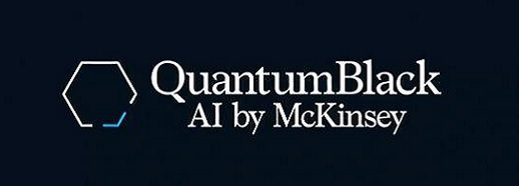McKinsey, Formula 1, and the America’s Cup

How the consulting giant has pioneered the implementation of AI and advanced analytics around the world through QuantumBlack.
Consultancy McKinsey & Company has long prided itself on helping its clients, the largest and most prestigious companies in the world, reach and surpass the leading edge in their respective fields. In 2015, the Firm took a strong step into specializing in technological innovation with several notable changes: First, McKinsey created a new division (McKinsey Digital) and housed its data analytics assets (McKinsey Solutions) within. Second, it acquired a series of digital and technology startups and incorporated them into McKinsey Digital to turbocharge its in-house capabilities. Among them was a small, London-based AI startup called QuantumBlack, which formally established the Firm’s presence in AI and machine learning.[1],[2]
Since then, McKinsey has helped innumerable clients identify and implement AI and ML into their operational models, leveraging the advanced capabilities of QuantumBlack with McKinsey’s expertise in leading change and its unparalleled access to CEOs around the world.
QuantumBlack
QuantumBlack was founded in 2009 by Jacomo Corbo, Simon Williams and Sam Bourton to use AI and big data to drive performance improvements:
At the time, many companies could assess the impact of several events, from an interest rate change to a flu outbreak. QuantumBlack offered the ability to evaluate the impact of 3-4 [million] scenarios in real time.[3]
Some of QuantumBlack’s first clients were Formula 1 (F1) racing teams. F1 is surprisingly experiment-driven with “thousands of development projects a year… that have a failure rate of about 97 per cent.”[4],[5] QuantumBlack used analytics and AI to improve teams’ car designs, racing strategies, and pit stop strategies. From there, the 35-person AI engine began to serve a wide variety of clients and industries, from pharmaceutical companies to aerospace groups.
A New Home at McKinsey
In 2015, McKinsey & Company announced its acquisition of QuantumBlack. Leaders from both companies quickly took to the press to explain the logic and beauty of the move.
While QuantumBlack was succeeding at building models at the bleeding edge of AI, it found itself struggling to help organizations lead the transformational changes needed to actually implement its analytical solutions. Their models were brilliant but the startup lacked resources and expertise in change management.
McKinsey & Company, on the other hand, boasted decades of global leadership in change management across industries. As a major think tank and researcher, the Firm had also conducted significant research confirming that data analytics, AI, ML would continue to define the future of the global economy. What McKinsey lacked was the assets—human and physical—to enable it to be on the cutting edge of AI, and QuantumBlack fit their need perfectly.[6]
Some worried that QuantumBlack would lose its edge when subsumed into the 40,000-person consultancy. The Firm mitigated this risk by maintaining QuantumBlack as a separate and discrete entity. Today, traditional McKinsey teams interact with QuantumBlack similarly to how they might work with an external vendor but benefit from shared infrastructure and ways of working. The management consultants also hold the AI engineers in great esteem and almost celebrity status within the Firm, retaining deep respect for their unique talents and contributions.
Putting It into Practice: McKinsey-Powered AI
Since the acquisition, McKinsey has succeeded in establishing itself as a highly respected leader in advanced analytics. QuantumBlack has grown to include “more than 4,000 AI-fluent industry experts and over 1,000 data science and engineering technologists working on over 10,000 AI-related projects over the last three years.”[7] While McKinsey isn’t the only management consultancy leading AI implementation projects, they have won have a distinct competitive edge through QuantumBlack.
The proof is in the pudding.
Take for example Team New Zealand (TNZ), the 2017 winners of the America’s Cup, one of the most prestigious trophies in competitive sailing and the oldest still-operating competition in any sport.[8] Sailing and TNZ have long been data-driven; a simulator helped TNZ more efficiently design and test their winning boat in 2017. But to defend their title in 2021, TNZ turned to McKinsey’s QuantumBlack. Previous simulators were slow and still relied on sailors to run each simulation, further extending cycle time. Instead, McKinsey used AI and ML to build a simulator that allowed bots to rapidly run tests of boat designs and crew strategy. The simulator learned quickly:
Ultimately, there were a thousand bots running in parallel, learning from each other… The turning point came about eight weeks later, when the AI bot started beating the sailors in the simulator. At this point, the bot became the ideal way to test variations of the hydrofoils; it was more consistent and more scalable than the sailors, speeding the cycles of design iterations dramatically. Soon, the sailors were learning maneuvers from the bot…. Over the course of 2019 and early 2020, the bot sped New Zealand’s design process by a factor of ten.
TNZ won the 2021 America’s Cup and credit much of their success to the advantages they enjoyed as a result of their AI-powered strategy.
On an entirely different note, McKinsey worked with an international NGO to improve outcomes for survivors of human trafficking. The NGO had been serving over 50,000 annually but wanted to scale to impact at least 1 million persons annually by 2030.[9] To help the organization accomplish this goal, McKinsey turned to QuantumBlack:
Our team collaborated with the organization to extract new insights from its more than 10,000 anonymized-survivor support records. The work included digitally analyzing more than 250,000 services offered to the survivors and some 100,000 paragraphs of case-worker notes. McKinsey experts used a combination of machine learning, natural language processing, and journey analytics mapping to understand the drivers of survivors’ recovery and ways to raise the likelihood that they could quickly regain their lives.
Analysis identified a number of risk factors correlated with a higher likelihood of longer recovery, dropping out of recovery, or being retrafficked. These insights are currently being used to redesign the NGO’s service model, with new methods showing a 50%+ improvement in success.[10]

In an a more classic example, McKinsey and QuantumBlack used AI-powered models to improve the thermal efficiency of the Martin Lake Power Plant in Tatum, Texas. Hundreds of variables impact the electricity output levels of power plants, and operators train for decades to develop the intuition needed to make plant-management decisions. QuantumBlack built a multilayered neural-network model using two years’ worth of plant data that generates recommendations for operators every 30 minutes to help maintain optimal heat-rate efficiency:
At a meeting with all of Vistra’s leaders to review the HRO, Lloyd Hughes, a seasoned operations manager at the company’s Odessa plant, said, “There are things that took me 20 years to learn about these power plants. This model learned them in an afternoon.”
In just three months, the impact was already significant: the power plant was running at 2% greater efficiency, which resulted in $4.5M in annual savings and 340,000 tons of carbon reduced. Vistra, the owner of the Martin Lake Power Plant, has now implemented QuantumBlack’s model across 26 of its power plants and recognized over $23M in savings.[11]
The nature of McKinsey’s business model is such that we can never fully know the extent of the impact that it is able to have globally through QuantumBlack. But McKinsey’s foresight in acquiring QuantumBlack to begin with and the brief examples described above just an inspiring glimpse of the powerful and creative impact possible when AI- and ML-powered solutions are placed in the hands of leaders, who are then guided by world-class experts in change management. While AI at McKinsey remains a niche within its broader portfolio, these successes through QuantumBlack have reinforced the Firm’s commitment to leadership in analytics and portend a brilliant future to come.
[1] https://www.consultancy.uk/news/3068/mckinsey-acquires-data-analytics-firm-quantumblack
[2] https://www.rocketblocks.me/blog/mckinsey-digital-overview.php
[3] https://www.ft.com/content/cbac5e32-143e-11e9-a168-d45595ad076d
[4] Ibid.
[5] https://www.frontier-enterprise.com/ceo-vision-quantumblacks-journey-from-f1-to-the-enterprise/
[6] https://www.mckinsey.com/about-us/new-at-mckinsey-blog/accelerating-with-quantumblack
[7] https://www.wired.co.uk/bc/article/maximizing-the-potential-of-ai-for-business
[8] https://en.wikipedia.org/wiki/America’s_Cup
[9] https://www.mckinsey.com/about-us/new-at-mckinsey-blog/inside-a-project-using-analytics-to-help-survivors-of-modern-slavery
[10] https://www.mckinsey.com/capabilities/quantumblack/how-we-help-clients/noble-intelligence/harnessing-the-power-of-ai-to-improve-recovery-for-survivors-of-human-trafficking
[11] https://www.mckinsey.com/capabilities/mckinsey-digital/how-we-help-clients/an-ai-power-play-fueling-the-next-wave-of-innovation-in-the-energy-sector



Interesting! Most of the examples others wrote in the blog have been where the AI is used for the company and not as a service to a variety of clients. It makes me wonder how intellectual property is contracted out. I know that consulting firms like to be coy about their engagements and even make an effort to prevent conflicts of interests across their staff. But when the machine learning model learns from each engagement and improves, who’s the say that the next powerplant 2 years from now that contracts with McKinsey won’t benefit from the learnings.
Michelle, thank you so much for that post! I am really fascinated by Quantum and have been following them for years!
I think that McKinsey is really pioneering with this “elite unit” and thus further expanding its position in consulting. In consulting, it is essential to be “on top of things”, and these days – as we also learn in this class – this includes digital cababilities in particular. In order to be credible in front of the customer and to deliver real added value, it is essential for consulting firms to build up this digital knowledge power. BCG has done something similar with Gamma, or other consultancies that buy AI analytics companies. I think this is definitely a big trend and need in the market and Quantum has managed to get real publicity with these emotional examples like sailing (which fascinates many people)!
For me, the introduction of new technologies (in this case AI and machine learning) in the sports industry is always very fascinating and at the same time questionable. Formula 1 and sailing are both sports which, before the introduction of artificial intelligence, were already very dependent on the sports equipment being used. I would say that at the very highest level, all the athletes can sail or drive a car exceptionally well at similar levels. It’s just nuances that make the difference between winning and losing. From my point of view, the use of sports equipment that is superior to its competitors distorts the competition (as for example Mercedes in the previous 7 Formula 1 seasons). With the use of AI and ML, at some point it will no longer be the personal skills of the athletes that matter, but which team has the best algorithm or, in the case of the America’s Cup, the best simulator. On the other hand, this could even out in the long run, because in the event of success, all teams will rely on such technologies, as we saw in the Hoffenheim case with the footbonaut.
To briefly address Patric’s point, at some point McKinsey will probably have to face the question of whether they can sell the same technology to competing teams. Since they have already had a lot of experience with TNZ, I wonder to what extent they will be allowed to work with new teams from the same industry and pass on the knowledge and further developed model from their previous projects.